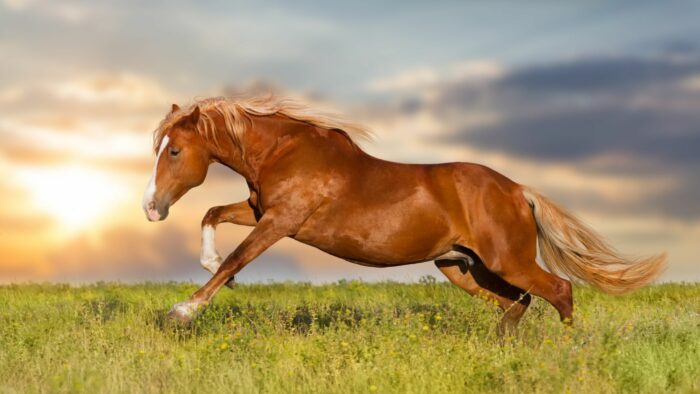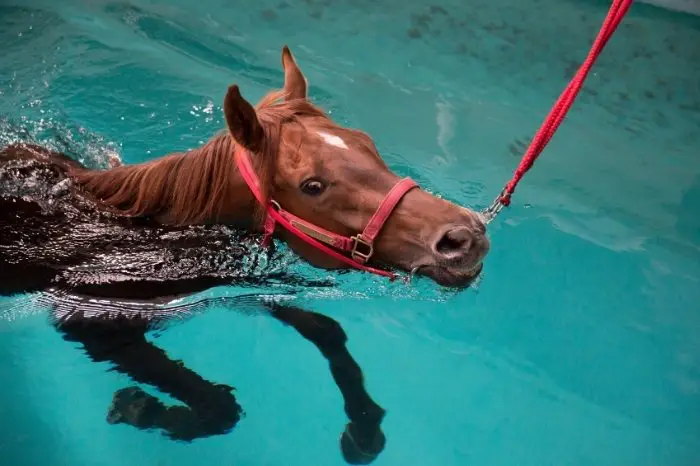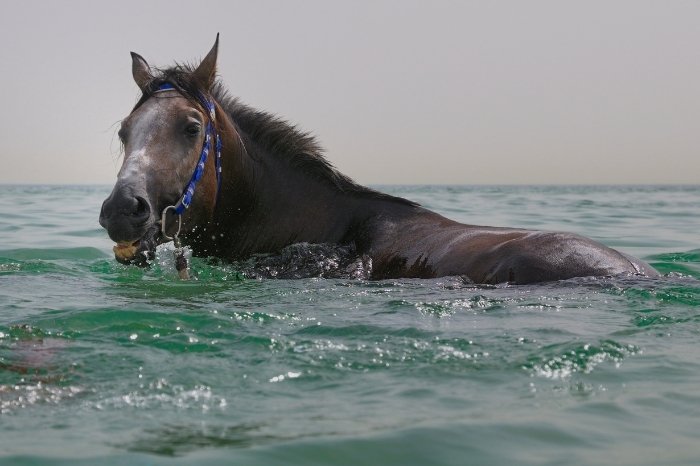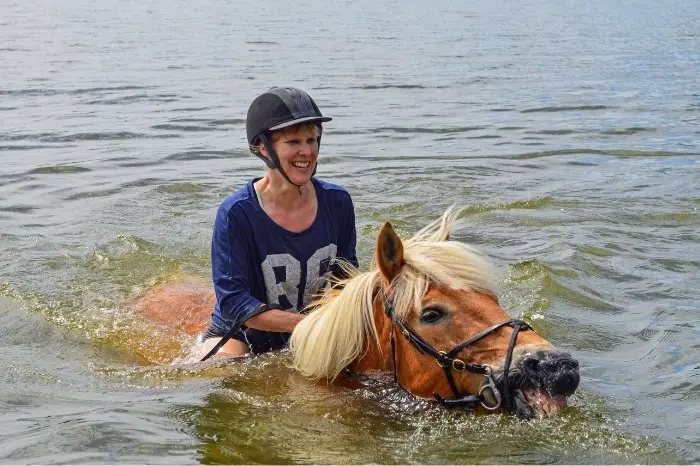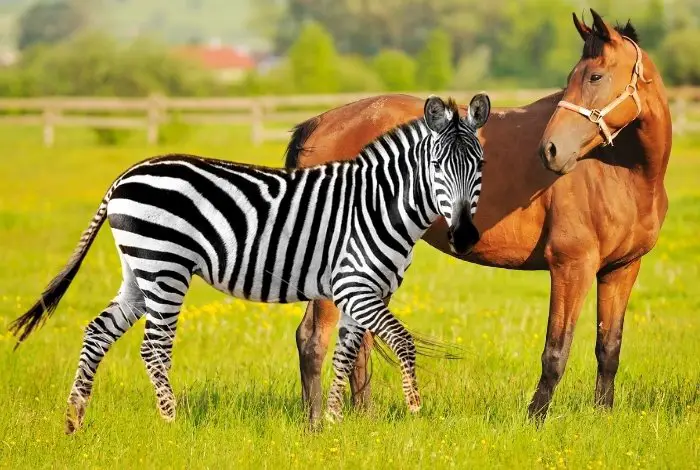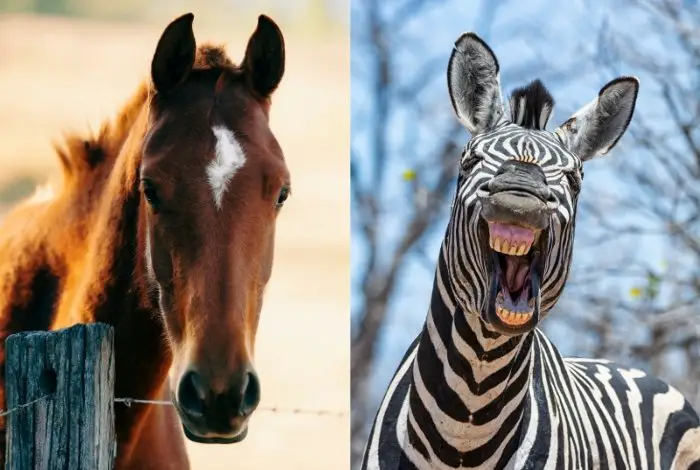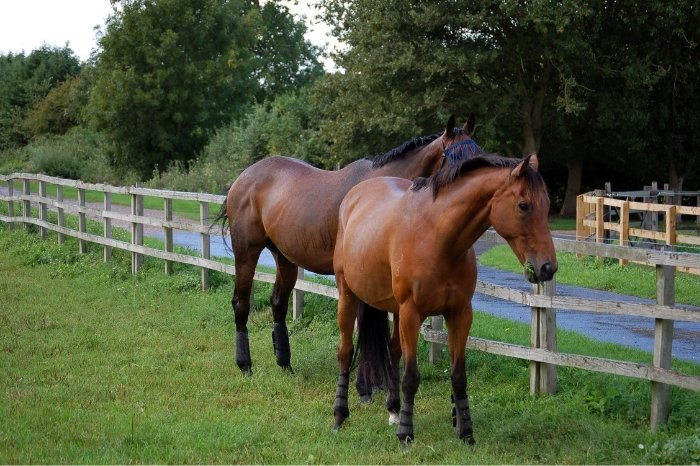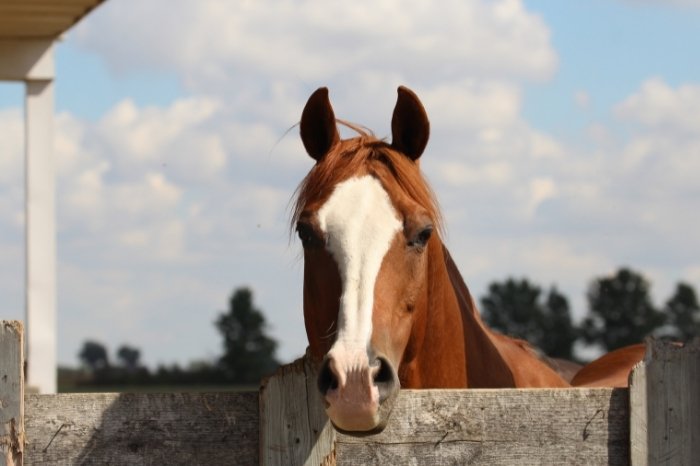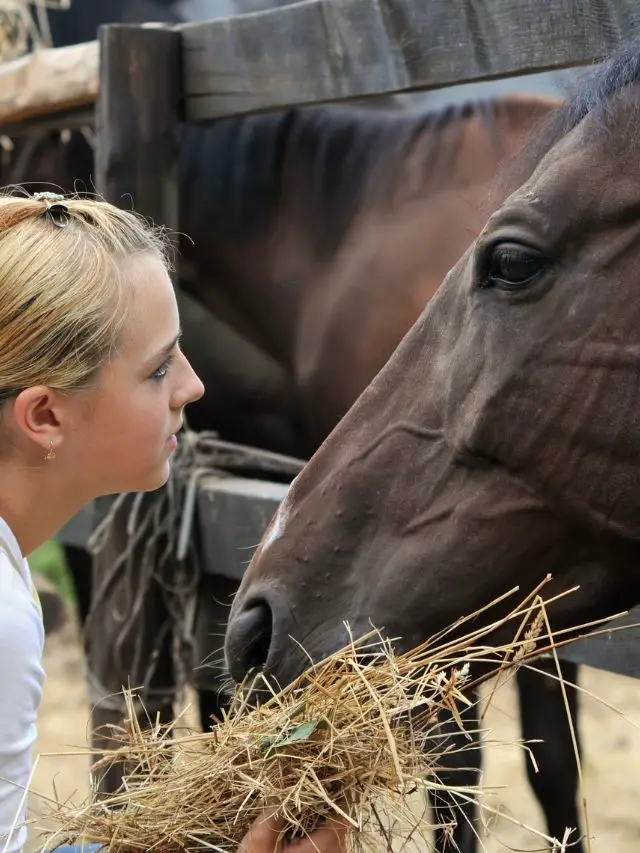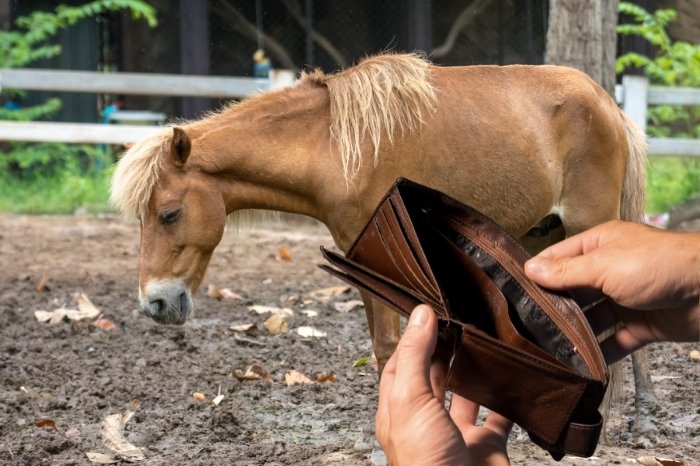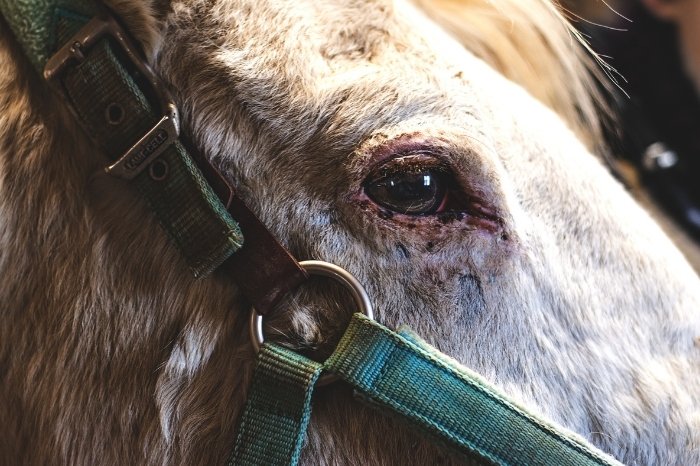Horses are well known for their speed, but how long can horses run without stopping? In the wild, horses can cover many miles every day, and domesticated horses have also achieved some incredible feats of speed and endurance. Let’s take a look at how far and how fast horses can run!
How Long Can Horses Run for?
The distance and time that a horse can run depend on two main factors – the fitness levels of the horse, and the speed at which it is running. It is easiest to think of this in terms of human runners – sprint runners run at top speed for short distances, while marathon runners cover longer distances at a slower pace.
The faster a horse moves, the more energy it exerts, and the shorter the distance it can travel at that speed. Today we’ll take a look at the different paces of the horse, and see how long they can run ft each pace. You’ll find it surprising just how far a horse can travel!
How long can a horse trot?
Trotting is the second slowest pace a horse moves in. This pace puts less strain on the body than a canter or gallop, so the horse can cover a longer distance before it tires out and needs a break. A healthy horse with good fitness can trot at a steady pace for up to one hour.
In this hour, the horse can cover eight miles. This does not mean the horse can trot for this long without any walking breaks unless it is at peak fitness It should always have a chance to walk and catch its breath when needed.
If it needs a break during this period it doesn’t necessarily mean the horse is too tired to continue. You will need to use your judgment to decide when to stop trotting completely. An unfit horse will not have the ability to do this much trotting.
To get to the point of trotting for an hour, you will need to gradually build your horse’s fitness, so it can do it without injury or soreness.
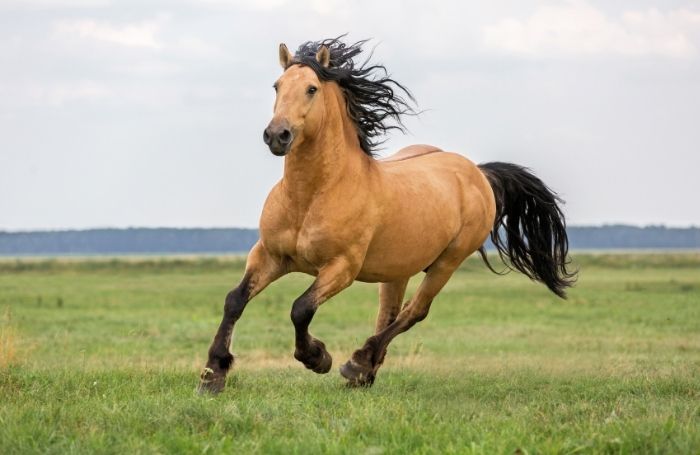
How long can a horse canter?
Canter is a three-beat gait that is faster than a trot and slower than the gallop. The canter pace requires more physical exertion from the horse, especially if the horse is not very fit.
If you canter at a slow pace, a horse can comfortably cover one to five miles before it becomes too tired. Five miles is the higher end of this exercise and should not occur unless the correct training preparation has been done. If you canter a long distance before the horse is ready, it can cause muscle, tendon, or ligament injuries.
Extended periods of cantering can also put too much pressure on the cardiovascular system. For comparison, imagine that you want to start jogging but have not done any exercise other than a short walk around town for weeks. Now, if you suddenly went out to jog five miles, your lung capacity would not cope, and you probably would not make the distance.
You will also feel pretty sore the next day and give yourself a high possibility of injury. This is how you should think when planning a long-distance canter on your horse.
Read more about How Fast Do Thoroughbreds Run; Is It The Fastest?
How long can a horse gallop?
Galloping is a four-beat gait and the fastest speed a horse can travel. This is the gait you see with racehorses when they race.
With an unfit horse, you need to keep galloping to very short sprints to start with. Racehorses build up to galloping over several weeks.
This ensures their tendons and ligaments are prepared for the job, which is quite intense physically. A horse in good physical shape can run for one to two miles before getting too tired. Some horse races, such as the English Grand National, cover four miles.
Due to the pace of the gallop, pushing a horse past its limits puts it at a very high risk of injury. How far can a horse run without stopping also depend on the breed. Lighter, hot blood horses can run for longer than a heavy-draft horses.
This is because their body weighs less, making it easier for the horse to move. These breeds also have the genetics that gives them the athletic ability for fast work. The most common type of horses for galloping is the Thoroughbred and the Arabian.
For a more visual guide to how far a horse can gallop without stopping, check out this video
How long can a horse walk?
Walking is a four-beat gait and the slowest pace of the horse. Because walking uses significantly less energy and puts less stress on the body, a horse can walk for many miles before it tires. How long a horse can walk will depend on the long-term goal.
If you plan to walk only for a day, you can walk at a quicker pace and travel further. If the plan is to cover many miles over several days, it is necessary to stick to a daily limit. This will ensure your horse stays fresh and doesn’t suffer an injury.
A good example of a daily limit is to look at the distance a cavalry would travel in a day. These units would need to keep moving for several weeks at a time. So to keep the horses in good condition, the cavalry would stick to only covering 20 to 30 miles a day.
In contrast, an endurance horse might cover 100 miles in just one day. However, these horses are bred for this job and spend months building up their fitness to achieve this. A trail horse that regularly goes out can manage close to fifty miles a day.
Regardless of if you plan to ride for eight hours a day, or 20 miles, the horse will need breaks for rest, drink, and food, even if you stick to a walking pace.
Learn about How Far Can A Horse Run In A Day?
How Far Can a Horse Travel in One Day
Multi-day trail and camping trips are a popular way for riders to get away from everything, relax and enjoy the wilderness. During these trips, the riders keep the pace slow, pretty much walking the entire time. Sticking to a slow pace, meaning the horse can comfortably go for a long distance.
On this type of trip, even if you are just walking, the horse still needs plenty of water and a chance to rest its legs now and again.
Cavallo Simple Hoof Boot for Horses
How Fast Do Horses Run?
Now we know how long horses can run without stopping, let’s look at how fast they are too! The top speed of a horse depends on many factors, such as the size, breed, and fitness levels of the horse. Let’s take a look at some of the most common questions about how fast can a horse run:
How fast do racehorses run?
Racehorses are amongst the finest equine athletes in the world – it is no wonder that horse racing is called the ‘sport of kings’! In a race, the horses run at a fast galloping pace, and the average speed depends on the length of the race. Like humans, some horses excel at sprinting, while others do better over a longer distance.
In a shorter sprint race, it is not uncommon for horses to hit an average speed of 40mph or more. Over longer distances, horses can regularly achieve average speeds of 35mph or more.
How fast can a thoroughbred run?
The fastest speed ever recorded by a Thoroughbred racehorse was an incredible 43.496 mph! This Guinness World Record was set by a 2-year-old filly named Winning Brew in Pennsylvania in 2008, smashing all previous records with her impressive run.
How fast can a horse run with a rider?
Interestingly, although Thoroughbred racehorses are famous for their speed, they are not the fastest horses in the world! The American Quarter Horse can accelerate from a standing start faster than a Thoroughbred, and over a short sprint can reach speeds of up to 55mph.
However, Quarter Horses cannot retain this speed for long, which is how they got their name. These speedy little sprinters commonly raced over a distance of a quarter of a mile. Their amazing speed and ability to stop, start, and turn quickly make them the ideal mount for equestrian pursuits such as roping and barrel racing.
How fast can a pony run?
In proportion to their size, ponies are actually very fast! For example, a Shetland pony can reach speeds of up to 30mph – this is only 10mph slower than most Thoroughbreds, and they are half the size!
Ponies also have high levels of stamina and can cover long distances at a reasonable pace. Native ponies are particularly good at long-distance trail rides, able to cover the rocky and treacherous ground for several hours without a rest.
Conclusion
It is important to remember that not every horse is capable of achieving the distances and speeds discussed here. Just like people, every horse is an individual, and some have more athletic ability and stamina than others. While some horses enjoy moving all day, others prefer to nap under a tree.
On average, the furthest most horses can a horse run without stopping is a few miles, as long as they are fit enough. Whatever you plan to do with your horse, make sure you correctly train your horse to successfully cover these distances comfortably and to lower the risk of injury.
Frequently Asked Questions
How far can a horse with rider run?
A well-trained horse with sufficient levels of fitness can carry a rider while in a gallop for up to 1.5 miles. Horses who gallop for longer distances than this will most likely become extremely exhausted and overheated.
Gallop is defined as the fastest pace of a horse or other quadruped, with all the feet off the ground together in each stride. Galloping is not the same as trotting, which is when two feet leave the ground at a time in diagonally opposite pairs.
How many hours horse can run?
A properly trained, fit horse can run over distances as long as two to three miles at their top speed without stopping. The top speeds of horses are limited by the oxygen that is being delivered to their muscles. The amount of oxygen that is needed to support the energy demands of the body is dependent on the type of activity and the environmental conditions (temperature, altitude, humidity) during the race.
However, some endurance horses can run as far as 100 miles in one day, as long as they are allowed regular breaks to rehydrate and cool down. The actual distance and time a horse can run vary greatly from breed to breed and it’s affected by the health, training, stamina, and build of the horse.
How far can a horse travel in 3 hours?
A horse can travel anywhere from four to five miles per hour when walking and will travel between eight and twelve miles per hour at a trot. At a canter, a horse can reach speeds of around twelve to fifteen miles per hour. Gallop is the fastest way the horse can move – an average horse can gallop at speeds between 25 and 30 miles per hour.
How far can an Arabian horse run?
Arabian horses are renowned for their ability to cover great distances on land. These animals have been bred to be extremely fast, and powerful, and can carry riders over many miles at a time. They are famous for their stamina, speed, and endurance. Arabian horses are capable of sustained high-speed running for an extended period, at distances over 2.5 miles. Most other breeds of racehorses, including Thoroughbreds and Quarter horses, tire faster and can’t make it past 2 miles.
How far did Cowboys travel on horseback?
Horse riding in the 1800s in America would likely take anywhere between 30 to 40 miles per day. On hilly terrain, the distance a horse could cover would likely be about 25 to 30 miles per day, while in the mountains 15 to 20 miles per day.
Early settlers in the western states and territories used horses as a primary means of transportation, but they didn’t just travel with them. The cowboy’s horses did more than just transport them from place to place. The animals were used for a wide variety of other tasks including pulling plows and working cattle. In the West, the horse truly became a part of the region’s culture and identity. Cowboy culture in the United States has a long history and a rich tradition of Western music and song. The image of the cowboy and his horse has become an iconic representation of the Old West.

